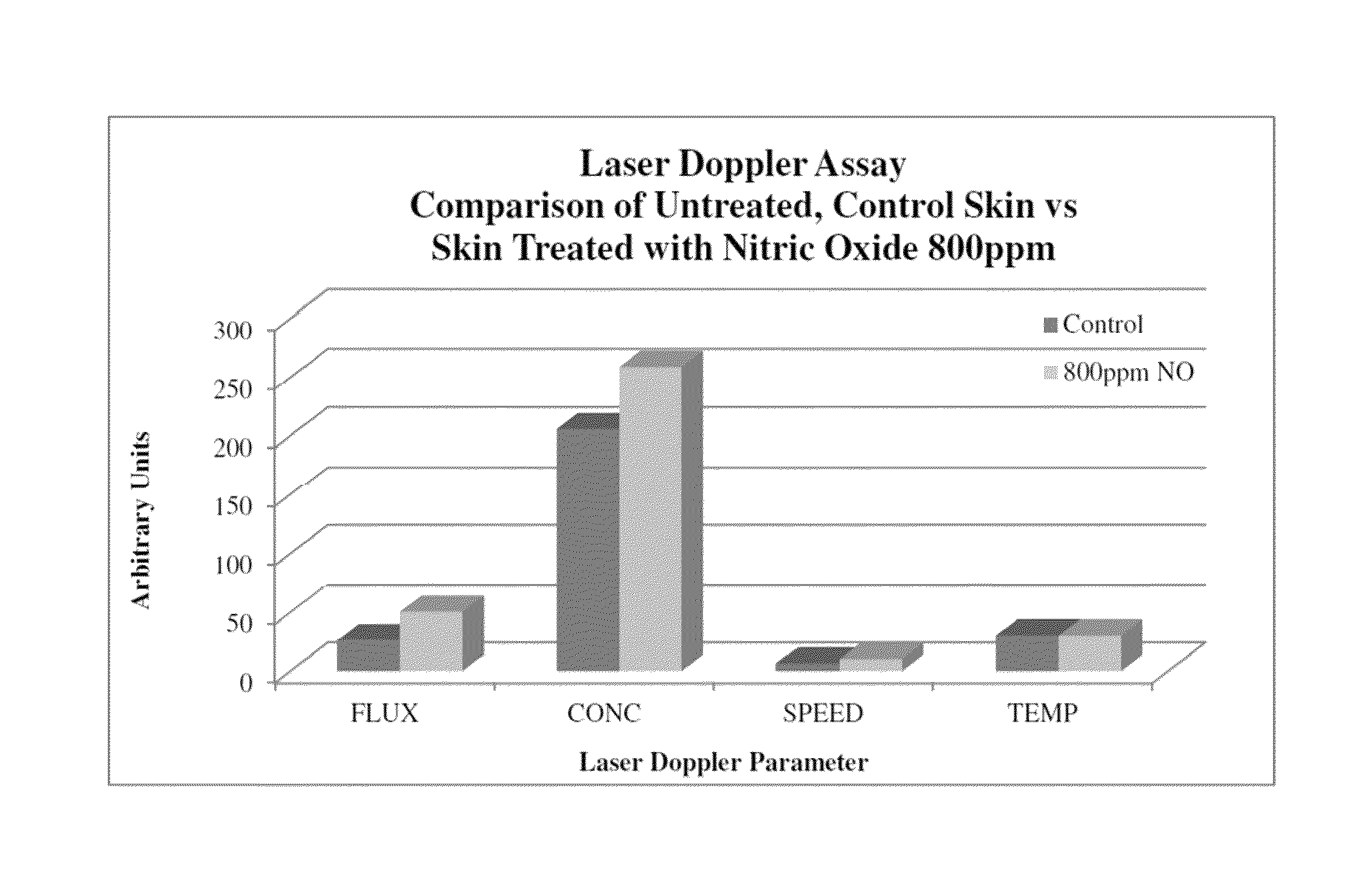Immune modulation using peptides and other compositions
a technology of immune modulation and composition, applied in the direction of peptide/protein ingredients, pharmaceutical delivery mechanisms, antibody medical ingredients, etc., can solve the problems of lack of topical or transdermal delivery systems for modulating the immune system, ineffective delivery systems for all compounds,
- Summary
- Abstract
- Description
- Claims
- Application Information
AI Technical Summary
Benefits of technology
Problems solved by technology
Method used
Image
Examples
example 1
[0091]This example illustrates one technique for preparing a composition in accordance with one embodiment of the invention. An accurate amount of a carrier (HNC 167-62) (see below) was introduced into a system. The carrier weight used in these experiments was approximately 250 g and the vessel size was 500 ml. The vessel was equipped with a mechanical stirrer, gas inlet, and gas outlet and was previously purged with argon for about an hour. The temperature of the carrier was kept at about 25-30° C. NO gas regulated at 5 psi (1 psi is about 6,900 Pa) and was then introduced at a controlled rate of about 1 bubble / s with continuous stirring. The color, consistency, and viscosity of the carrier did not appear to change if NO was bubbled for 30 minutes to 2 hours. After 6 hours, the weight of the carrier had increased by 0.15%, by 12 hours by 0.25%, and by 24 hours by 0.56%. These increases in weight were believed to be significant considering the relative small molecular weight of NO v...
example 2
[0092]In this example, six experiments were carried out to investigate the interaction of nitric oxide with three carriers (HNC 157-62, HNC 157-65, and HNC 157-69) as well as with 1,3-propanediol, using experimental conditions similar to that described for Example 1. In addition three experiments were performed to prepare carriers containing 800 ppm and 500 ppm nitric oxide. HNC 157-62 was formed of 65% Phospholipon-90G (American Lecithin Company), 18% isopropyl palmitate (Kraft Chemicals), 8% capric caprylic triglycerides (RITA Corp.), and 9% propanediol (Dupont). HNC 157-65 was formed of 65% Phospholipon-90G, 13% isopropyl palmitate, 14% capric caprylic triglycerides, 3% propanediol, and 5% dimethyl isosorbide (Croda). HNC 157-69 was formed from 65% Phospholipon-90G, 16% isopropyl palmitate, and 19% capric caprylic triglycerides.
[0093]The compositions were generally prepared as follows. Isopropyl palmitate, capric caprylic triglyceride, propanediol (for HNC 157-62 and HNC 157-65),...
experiment 1
[0098]The carrier was HNC 157-62. Nitric oxide gas was bubbled for 24 hours at 25° C. The initial weight of carrier was 168.53 g., and the final weight was 169.48 g. The net weight gained was 0.95 g and the percentage weight gain was 0.56%.
PUM
| Property | Measurement | Unit |
|---|---|---|
| temperature | aaaaa | aaaaa |
| temperature | aaaaa | aaaaa |
| wt % | aaaaa | aaaaa |
Abstract
Description
Claims
Application Information
 Login to View More
Login to View More - R&D
- Intellectual Property
- Life Sciences
- Materials
- Tech Scout
- Unparalleled Data Quality
- Higher Quality Content
- 60% Fewer Hallucinations
Browse by: Latest US Patents, China's latest patents, Technical Efficacy Thesaurus, Application Domain, Technology Topic, Popular Technical Reports.
© 2025 PatSnap. All rights reserved.Legal|Privacy policy|Modern Slavery Act Transparency Statement|Sitemap|About US| Contact US: help@patsnap.com


